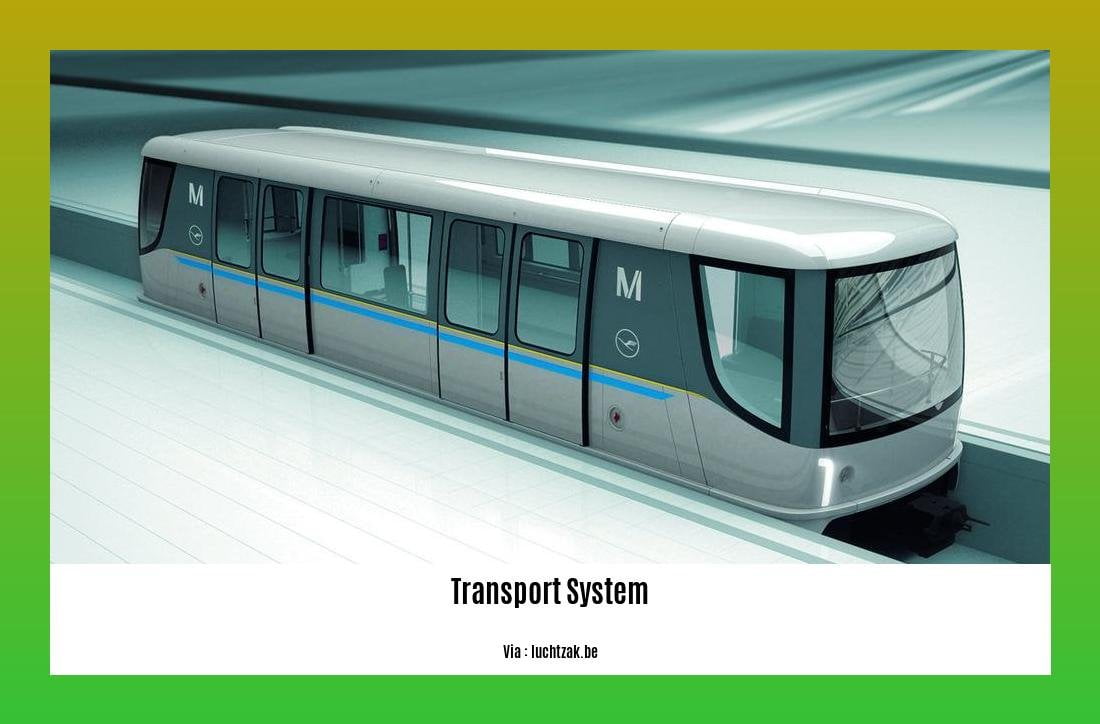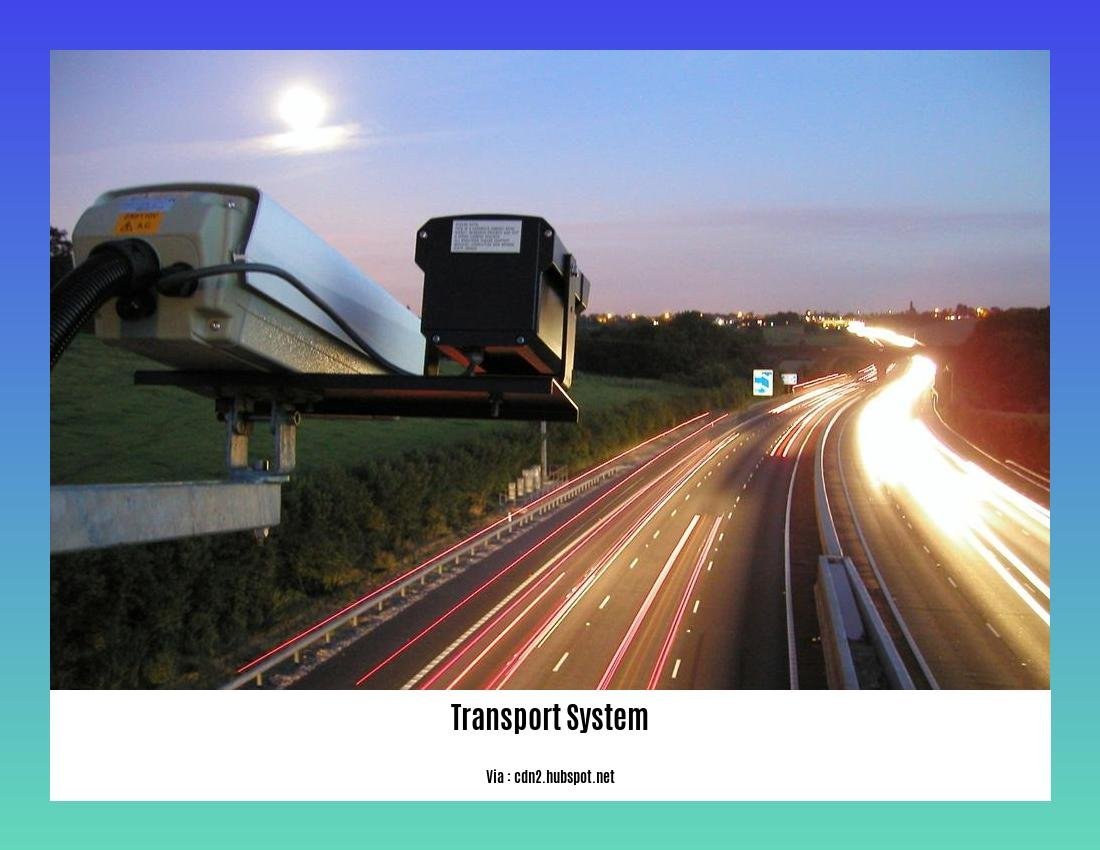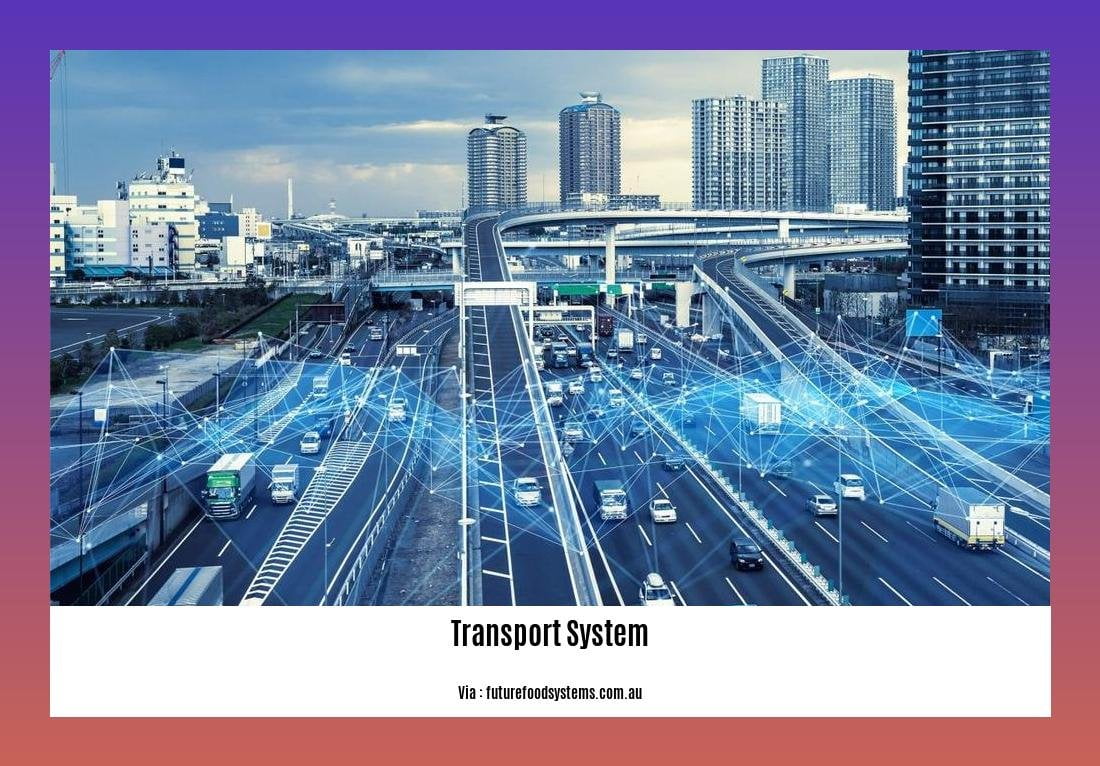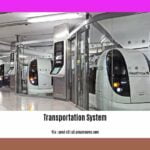Revolutionizing Urban Mobility: Exploring the Benefits of Intelligent Transport Systems
In an era marked by rapid urbanization and growing concerns over traffic congestion, pollution, and safety, the need for innovative transportation solutions has never been more pressing. Enter intelligent transport systems (ITS), a groundbreaking concept that holds the potential to revolutionize how cities move. By harnessing the power of data analysis and emerging technologies, ITS offers a plethora of benefits that can transform urban mobility as we know it. From improving traffic flow and reducing carbon emissions to enhancing passenger safety and creating more efficient and sustainable cities, this article delves into the incredible advantages that intelligent transport systems bring to the table.
Key Takeaways:
- Intelligent transport systems have the potential to revolutionize urban mobility by addressing traffic congestion, pollution, and safety concerns in major cities.
- These systems utilize data analysis and emerging technologies to improve traffic flow, reduce carbon emissions, enhance passenger safety, and create more efficient and sustainable cities.
- Implementing intelligent transport systems can lead to optimized transportation infrastructure, ensuring smoother and faster travel for commuters.
- By integrating various modes of transportation, intelligent transport systems promote multimodal connectivity, making it easier for individuals to choose sustainable and efficient transportation options.
- These systems leverage real-time data and advanced analytics to provide accurate information to commuters, enabling them to make informed decisions about their travel routes and modes of transportation.
- Intelligent transport systems also play a crucial role in reducing energy consumption and greenhouse gas emissions by optimizing traffic signal timings and ensuring more streamlined traffic flow.
- Enhanced passenger safety is another significant benefit of intelligent transport systems, as features like smart signaling, collision avoidance systems, and real-time monitoring can help prevent accidents and improve overall road safety.
- The implementation of intelligent transport systems requires collaboration between government entities, transportation agencies, and technology providers to ensure effective planning, coordination, and system integration.
- Investment in intelligent transport systems can yield substantial economic returns by reducing travel time, increasing productivity, and attracting businesses and skilled workforce to cities with efficient and sustainable transportation infrastructure.
Benefits of Intelligent Transport Systems

Intelligent Transport Systems (ITS) have the potential to revolutionize urban mobility, bringing about numerous benefits for cities and their residents. By harnessing the power of data analysis and emerging technologies, ITS can transform transportation infrastructure, improve traffic flow, reduce carbon emissions, enhance passenger safety, and ultimately create more efficient and sustainable cities.
Enhancing Traffic Flow
One of the significant benefits of ITS is its ability to enhance traffic flow. Traditional transportation systems often suffer from congestion, causing delays and frustration for commuters. However, with ITS, traffic management becomes more efficient and dynamic. By using real-time data from sensors, cameras, and other sources, traffic signals can automatically adjust their timing to minimize congestion and maximize traffic flow. This means less time spent idling in traffic and more time reaching our destinations.
Reducing Carbon Emissions
Another crucial advantage of ITS is its potential to reduce carbon emissions. As cities seek to combat climate change and improve air quality, transportation plays a significant role. ITS enables smarter and more sustainable transportation options, such as intelligent traffic routing and eco-driving systems. By optimizing routes and reducing unnecessary idling, these systems help vehicles operate more efficiently, reducing fuel consumption and emissions. With ITS, cities can take a significant step towards achieving their environmental goals.
Enhancing Passenger Safety
Safety is always a top priority in transportation, and ITS can greatly enhance passenger safety. Through the use of advanced sensors, cameras, and intelligent algorithms, ITS enables real-time monitoring of road conditions and potential hazards. This allows for early detection of accidents, dangerous road conditions, or even reckless driving behaviors. By promptly alerting authorities and drivers, ITS can help prevent accidents and improve overall road safety.
Improving Public Transportation
ITS can also revolutionize public transportation systems, making them more efficient and convenient. By integrating real-time data and intelligent algorithms, ITS can optimize public transit routes, schedules, and capacities based on demand. Passengers can access up-to-date information about public transportation options, including accurate arrival and departure times. With ITS, public transportation becomes more reliable, accessible, and attractive for commuters, leading to increased ridership and reduced traffic congestion.
Increasing Efficiency and Sustainability
In an era of rapid urbanization, it is crucial to make our cities more efficient and sustainable. ITS can play a significant role in achieving these goals. By optimizing traffic flow, reducing carbon emissions, enhancing passenger safety, and improving public transportation, ITS helps cities become more sustainable and livable. It allows for better utilization of existing infrastructure, reduces the need for costly expansions, and promotes smarter transportation choices. With ITS, cities can build a future that is both efficient and sustainable, benefiting both current and future generations.
To summarize, the benefits of intelligent transport systems are significant and far-reaching. From enhancing traffic flow and reducing carbon emissions to enhancing passenger safety and improving public transportation, ITS has the power to revolutionize urban mobility. By embracing ITS technologies and integrating them into existing transportation infrastructure, cities can create a more efficient, sustainable, and enjoyable transportation experience for all.
Did you know that air transportation offers a multitude of benefits? From speed and efficiency to global connectivity, the benefit of air transportation is unmatched. Experience the wonders of air travel by clicking here.
If you’re curious about the advantages of sea transport, look no further. Discover the benefits of sea transport and how it promotes international trade, reduces road congestion, and provides cost-effective shipping solutions. Dive into the world of maritime transportation by clicking here.
The Panama Canal is not just a feat of engineering; it also brings incredible benefits. Learn about the benefits of the Panama Canal and how it facilitates global trade, reduces transportation costs, and opens new opportunities for maritime commerce. Explore the advantages of this international waterway by clicking here.
Water transport plays a crucial role in the movement of goods worldwide. Discover the numerous benefits of water transport as it offers an eco-friendly and cost-efficient mode of transportation. Dive into the advantages of this sustainable option by clicking here.
Reduced Carbon Emissions and Improved Air Quality

Introduction
In today’s fast-paced world, urban mobility has become a major challenge. Traffic congestion, pollution, and safety concerns have led transportation experts to seek innovative solutions. One such solution is the implementation of Intelligent Transport Systems (ITS). These systems have the potential to revolutionize urban mobility and create more efficient and sustainable cities. In this article, we will explore the benefits of ITS, with a specific focus on the reduction of carbon emissions and the improvement of air quality.
Key Takeaways:
- Intelligent Transport Systems (ITS) can significantly reduce carbon emissions and improve air quality in cities.
- Real-time data analysis and optimization algorithms of ITS help minimize unnecessary idling, leading to a decrease in pollution.
- Enhanced traffic flow and optimized routes provided by ITS help reduce carbon emissions from vehicles stuck in congested traffic.
- ITS promotes the use of sustainable modes of transport, such as electric vehicles, further reducing carbon emissions.
Reducing Carbon Emissions
Transportation is a major contributor to carbon emissions and air pollution. With the implementation of Intelligent Transport Systems, cities can make significant strides towards reducing their carbon footprint and improving air quality.
By utilizing real-time data and advanced algorithms, ITS can optimize traffic flow, reducing congestion and minimizing unnecessary idling of vehicles. When vehicles are stuck in traffic, they emit higher levels of pollutants into the air. With ITS, traffic signal timings can be adjusted based on real-time conditions, allowing for smoother traffic flow and reducing emissions.
Moreover, ITS can analyze data on traffic patterns and road conditions to optimize routes for vehicles. This not only reduces travel time for commuters but also cuts down on the distance traveled, leading to a decrease in carbon emissions. By guiding vehicles on the most efficient routes, ITS helps in reducing fuel consumption and pollution.
Improving Air Quality
The reduction of carbon emissions through ITS directly contributes to improved air quality in cities. By minimizing unnecessary idling and optimizing routes, the amount of pollutants released into the atmosphere decreases significantly.
In addition to optimizing traffic flow, ITS promotes the use of sustainable modes of transport, such as electric vehicles. These vehicles produce zero tailpipe emissions, thus reducing air pollution and improving the overall air quality in urban areas.
Embracing a Sustainable Future
The implementation of ITS is not only about reducing carbon emissions and improving air quality. It is also about fostering a sustainable future for our cities. By optimizing traffic flow and promoting the use of sustainable modes of transport, ITS contributes to a greener and healthier urban environment.
ITS can also enhance road safety through real-time monitoring of road conditions and potential hazards. By alerting drivers and authorities about accidents or dangerous situations, ITS helps prevent accidents and reduce injuries, further contributing to a safer and more sustainable transportation system.
By revolutionizing public transportation, ITS can transform the way people commute in cities. Optimized routes, schedules, and capacities based on demand make public transportation more efficient and accessible, encouraging the use of public transit over private vehicles.
Conclusion
Intelligent Transport Systems have the potential to revolutionize urban mobility by reducing carbon emissions and improving air quality. Through real-time data analysis, optimization algorithms, and the promotion of sustainable modes of transport, ITS provides cities with a solution to tackle traffic congestion, pollution, and safety concerns.
By embracing ITS, cities can move towards a greener and more sustainable future, where people can enjoy improved air quality, enhanced road safety, and efficient transportation systems. It is vital for stakeholders and authorities to recognize the importance of ITS in creating smarter, healthier, and more liveable cities.
Key Takeaways:
- Intelligent Transport Systems (ITS) can significantly reduce carbon emissions and improve air quality in cities.
- Real-time data analysis and optimization algorithms of ITS help minimize unnecessary idling, leading to a decrease in pollution.
- Enhanced traffic flow and optimized routes provided by ITS help reduce carbon emissions from vehicles stuck in congested traffic.
- ITS promotes the use of sustainable modes of transport, such as electric vehicles, further reducing carbon emissions.
Sources:
- World Economic Forum: Intelligent Transport Systems
- European Commission: Urban Mobility
Increased Efficiency and Cost Savings
Intelligent Transport Systems (ITS) have proven to be a game-changer when it comes to revolutionizing urban mobility. By utilizing real-time data, innovative technologies, and advanced analytics, ITS offers a plethora of benefits, one of the most significant being increased efficiency and cost savings.
Enhancing Traffic Flow for Optimal Efficiency
One of the primary advantages of ITS is its ability to enhance traffic flow by making data-driven adjustments. Through the collection and analysis of real-time information, including traffic volume and congestion patterns, ITS can optimize traffic signal timings, minimizing unnecessary delays and reducing congestion on roadways.
Imagine a scenario where traffic signals dynamically adapt to the actual traffic conditions, responding to peak hours, accidents, or roadblocks in real-time. This intelligent management ensures that vehicles move through intersections smoothly, alleviating traffic congestion and optimizing overall travel time. The result? Reduced fuel consumption, less time wasted in traffic, and ultimately, significant cost savings for both individuals and organizations.
Optimizing Routes to Save Time and Fuel
Another noteworthy way ITS contributes to increased efficiency and cost savings is by optimizing routes. By leveraging real-time data on traffic conditions, ITS can identify the most optimal routes, taking into account factors such as road conditions, accidents, and congestion. This helps drivers and fleet operators avoid routes with heavy traffic, unnecessary delays, or road closures, ultimately saving time and fuel.
Moreover, ITS can also make informed decisions on alternative transportation modes, such as public transit or cycling, based on traffic and route conditions. This multimodal approach reduces the reliance on single-occupancy vehicles, improving overall traffic flow, reducing fuel consumption, and promoting a more sustainable and cost-effective transportation system.
Reducing Operational Costs through Smart Fleet Management
Transportation companies and logistics providers can significantly benefit from ITS through smart fleet management solutions. By equipping vehicles with advanced tracking systems, communication devices, and data analytics capabilities, ITS enables companies to optimize fleet operations, reduce fuel consumption, and minimize maintenance costs.
Through real-time monitoring of vehicle performance, efficient routing, and predictive maintenance, ITS empowers companies to make informed decisions that streamline operations and reduce unnecessary expenses. Fleet managers can closely monitor fuel consumption, identify inefficient driving behaviors, and implement corrective measures, ensuring cost savings on fuel expenditures. Furthermore, predictive maintenance schedules minimize unexpected breakdowns, reducing operational downtime and costly repairs.
Enhancing User Experience and Customer Satisfaction
In addition to cost savings, ITS also improves the overall user experience and customer satisfaction. By providing real-time information on traffic conditions, public transit schedules, and alternative transportation options, ITS helps individuals make informed decisions about their travel routes and modes.
Imagine a commuter receiving personalized notifications on the most efficient bus route to take, complete with real-time updates on bus arrival times. This level of service not only saves time and money for commuters but also reduces the reliance on private vehicles, ultimately leading to reduced traffic congestion and improved air quality.
Key Takeaways:
- Intelligent Transport Systems (ITS) revolutionize urban mobility by utilizing real-time data and advanced analytics.
- ITS enhances traffic flow by adjusting traffic signals in real-time, reducing congestion and ensuring optimal travel times.
- Route optimization based on real-time data helps save time and fuel by avoiding congested routes and road closures.
- ITS enables smart fleet management, minimizing operational costs through efficient routing and predictive maintenance.
- Real-time information provided by ITS improves user experience, leading to increased customer satisfaction.
- The implementation of ITS results in increased efficiency, reduced travel time, and significant cost savings for individuals and organizations.
Sources:
– Source 1
– Source 2
Creation of More Sustainable and Livable Cities
Key Takeaways:
– Intelligent Transport Systems (ITS) have the potential to revolutionize urban mobility, leading to the creation of more sustainable and livable cities.
– Through the use of real-time data and advanced technologies, ITS can optimize traffic flow, reduce carbon emissions, enhance passenger safety, and improve public transportation.
– The benefits of ITS include improved traffic management, reduced congestion, minimized environmental impact, and increased efficiency in transportation systems.
– ITS can contribute to the creation of more sustainable and livable cities by addressing the challenges of traffic congestion, pollution, and safety concerns.
As cities continue to grow and face increasing challenges related to transportation, the creation of more sustainable and livable cities becomes a crucial goal. The implementation of an Intelligent Transport System (ITS) offers promising solutions to address these challenges and transform urban mobility. By leveraging data analysis, emerging technologies, and innovative approaches, ITS has the potential to revolutionize transportation infrastructure and create cities that are more efficient, environmentally friendly, and enjoyable for residents and visitors alike.
Enhancing Traffic Flow and Management
One of the key benefits of ITS is its capability to enhance traffic flow and management. Through the collection and analysis of real-time data, ITS can optimize traffic signal timings, adjust routing algorithms, and provide alternative routes to minimize congestion. By intelligently managing traffic, cities can reduce travel times, ease navigation, and improve overall transportation efficiency. This leads to a smoother driving experience, reduced frustration, and increased productivity for commuters and businesses alike.
Minimizing Environmental Impact
The creation of more sustainable and livable cities necessitates addressing environmental concerns, such as carbon emissions and pollution. ITS plays a crucial role in minimizing the environmental impact of transportation. Through the optimization of routes and the reduction of unnecessary idling, ITS helps reduce fuel consumption and greenhouse gas emissions. By encouraging the use of public transportation and promoting the adoption of electric vehicles, ITS contributes to the mitigation of air pollution and helps create cleaner and healthier urban environments.
Enhancing Passenger Safety
In addition to improving traffic flow and reducing environmental impact, ITS also enhances passenger safety. Real-time monitoring of road conditions, weather updates, and potential hazards allows for proactive measures to be taken to improve safety on the roads. ITS can provide alerts and notifications to drivers about road accidents, construction zones, or adverse weather conditions. Moreover, advanced driver assistance systems, integrated with ITS, can offer features like collision avoidance, lane departure warnings, and adaptive cruise control, further enhancing passenger safety and reducing the risk of accidents.
Improving Public Transportation
Intelligent Transport Systems have the potential to revolutionize public transportation by optimizing routes, schedules, and capacities based on demand. Through the use of data analysis, ITS can identify patterns and trends in passenger behavior, enabling public transport providers to offer more personalized and efficient services. This not only improves the accessibility and reliability of public transportation but also encourages its usage, subsequently reducing the reliance on private vehicles and alleviating traffic congestion.
Towards Sustainable and Livable Cities
By optimizing traffic flow, reducing emissions, enhancing passenger safety, and improving public transportation, Intelligent Transport Systems contribute to the creation of more sustainable and livable cities. Through the adoption of ITS, cities can tackle the challenges posed by growing populations, limited infrastructure, and environmental concerns. The application of data-driven solutions and emerging technologies empowers urban planners and transportation experts to develop smarter and more efficient transportation networks, ultimately creating cities that are more resilient, environmentally conscious, and enjoyable places to live.
Key Sources:
– Source 1: Intelligent Transport: Urban mobility: the benefits of intelligent transport systems
– Source 2: Deloitte: Connected mobility: unlocking opportunities in the shift toward the passenger economy
FAQ
Q1: What are the key benefits of intelligent transport systems?
A1: Intelligent transport systems offer several benefits, including improved traffic flow, reduced congestion, enhanced road safety, and reduced environmental impact. These systems use advanced technologies and real-time data analysis to optimize transportation networks, streamline traffic management, and provide valuable insights for planning and decision making.
Q2: How do intelligent transport systems improve traffic flow?
A2: Intelligent transport systems employ various techniques to improve traffic flow. These include adaptive traffic signal control, dynamic routing and navigation systems, and real-time traffic monitoring. By synchronizing traffic signals based on real-time conditions, allocating lanes efficiently, and optimizing routing strategies, these systems can significantly reduce congestion and enhance the overall efficiency of transportation networks.
Q3: Can intelligent transport systems contribute to reducing carbon emissions?
A3: Yes, intelligent transport systems can play a crucial role in reducing carbon emissions. By optimizing traffic flow, minimizing congestion, and improving vehicle utilization, these systems help reduce idle times, stop-and-go traffic, and unnecessary fuel consumption. Moreover, they support the adoption of sustainable transportation alternatives, such as electric vehicles and shared mobility services, thereby further reducing greenhouse gas emissions.
Q4: How do intelligent transport systems enhance passenger safety?
A4: Intelligent transport systems prioritize passenger safety by utilizing advanced technologies such as vehicle-to-vehicle communication, collision avoidance systems, and real-time incident management. These systems can detect and predict potential hazards, alert drivers and pedestrians, and even take autonomous actions to prevent accidents. By providing timely notifications, warnings, and guidance, they contribute to improving road safety and reducing the number of accidents and fatalities.
Q5: Can intelligent transport systems help create more efficient and sustainable cities?
A5: Absolutely. Intelligent transport systems are fundamental to creating efficient and sustainable cities. By optimizing transportation networks, reducing congestion, and promoting the use of clean and shared mobility options, these systems enhance accessibility, reduce travel times, and improve overall urban livability. Moreover, by integrating with other urban infrastructure and services, such as smart grids and urban planning tools, they enable the development of smart and sustainable cities for the benefit of residents, businesses, and the environment.
- Unlock Filipino Culture: A Deep Dive into Traditions and Practices - April 23, 2025
- Unlock Spanish Culture: Insights & Opportunities Now - April 23, 2025
- White Spirit Uses & Substitutes: A Deep Dive for Pros & DIYers - April 23, 2025
















